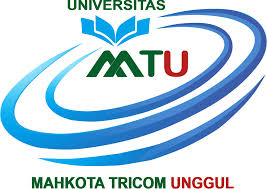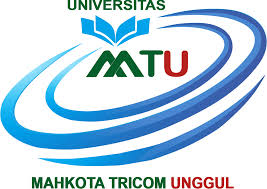Analysis of Leading Sectors in Economic Growth in Malang District
DOI:
https://doi.org/10.55927/ijba.v3i6.5794Keywords:
Location Quotient (LQ), Shift Share (SS), Leading SectorsAbstract
Leading sectors are those with the ability to strengthen the local economy and generate wealth. Finding the economic sectors that contribute most to the Malang District's regional gross domestic product is the aim of this study. This study uses quantitative description to identify the major and minor sectors of Malang Regency and makes use of time series data as secondary data from 2020 to 2022. Among the analysis instruments employed are the Location Quotient (LQ); The results showed that: (1) According to the location quotient (LQ) analysis, the main sectors of Malang Regency are agriculture, forestry, fisheries, manufacturing, water supply, waste management, solid waste and recycling. It consists of Masu. Construction industry retail and wholesale. repairs for cars, motorcycles, and other vehicles. (2) Shift share analysis for wholesale/retail, automobile/motorcycle repair. It can be seen that the proportional share (PS) and national PR share are highest in trade in goods both wholesale and retail, vehicle and motorcycle repair, and differential sharing. mining and quarrying sector.Leading sectors are those with the ability to strengthen the local economy and generate wealth. Finding the economic sectors that contribute most to the Malang District's regional gross domestic product is the aim of this study. This study uses quantitative description to identify the major and minor sectors of Malang Regency and makes use of time series data as secondary data from 2020 to 2022. Among the analysis instruments employed are the Location Quotient (LQ); The results showed that: (1) According to the location quotient (LQ) analysis, the main sectors of Malang Regency are agriculture, forestry, fisheries, manufacturing, water supply, waste management, solid waste and recycling. It consists of Masu. Construction industry retail and wholesale. repairs for cars, motorcycles, and other vehicles. (2) Shift share analysis for wholesale/retail, automobile/motorcycle repair. It can be seen that the proportional share (PS) and national PR share are highest in trade in goods both wholesale and retail, vehicle and motorcycle repair, and differential sharing. mining and quarrying sector.
Downloads
References
Adisasmita, R. (2013). Teori-teori pembangunan ekonomi : pertumbuhan ekonomi dan pertumbuhan wilayah. In teks.
Alhowaish, A., Alsharikh, M., Alasmail, M., & Alghamdi, Z. (2015). Location Quotient Technique and Economy Analysis of Regions: Tabuk Province of Saudi Arabia as a Case Study. International Journal of Science and Research (IJSR), 4(12), 1756-1761.
Ali, A. U., & Bakar, A. (2018). ANALISIS DAYA SAING SEKTOR UNGGULAN DALAM STRUKTUR PEREKONOMIAN KABUPATEN MIMIKA. JURNAL KRITIS (Kebijakan, Riset dan Inovasi), 2(1).
Khusaini, M. (2015). A Shift-share Analysis on Regional Competitiveness-A Case of Trenggalek District, East Java, Indonesia. Procedia-Social and Behavioral Sciences, 211, 738-744
Lewis, W. A. (2013). Theory of economic growth: Routledge.
Mangilaleng, E. J., Rotinsulu, D., & Rompas, W. (2015). Analisis Sektor Unggulan Kabupaten Minahasa Selatan. Jurnal Berkala Ilmiah Efisiensi, 15(4).
Morrissey, K. (2014). Producing regional production multipliers for Irish marine sektor policy: A location quotient approach. Ocean & coastal management, 91, 58-64
Pengertian Pembangunan Menurut Prof. Dr. Hj. Syamsiah Badruddin, M.Si. (n.d.). https://bappeda.bulelengkab.go.id/informasi/detail/artikel/pengertian-pembangunan-menurut-prof-dr-hj-syamsiah-badruddin-m-si-48
Pratiwi, D., & Warnaningtyas, H. (2017). ANALISIS STRATEGI PEMBANGUNAN WILAYAH KABUPATEN MADIUN MELALUI SEKTOR UNGGULAN. JURNAL EKOMAKS, 4(2).
Saputro, D. R. P., & Soebagyo, D. (2017). Analisis Potensi Ekonomi Kabupaten Dan Kota Diprovinsi Daerah Istimewa Yogyakarta. Universitas Muhammadiyah Surakarta
Surbakti, L. S. B., Marseto, & Sishadiyati. (2021). ANALISIS PENGEMBANGAN SEKTOR EKONOMI UNGGULAN DALAM PERTUMBUHAN EKONOMI DI KOTA MEDAN. JAMBURA ECONOMIC EDUCATION JOURNAL, 3(2). https://ejurnal.ung.ac.id/index.php/jej/index,
tulus t.h. tambunan. (1996). PEREKONOMIAN INDONESIA. http://library.itltrisakti.ac.id/opac/index.php?p=show_detail&id=1751
Usya, N. (2006). Analisis Struktur Ekonomi dan Identifikasi Sektor Unggulan di Kabupaten Subang. http://repository.ipb.ac.id/handle/123456789/10502
Downloads
Published
How to Cite
Issue
Section
License
Copyright (c) 2023 Riko Setya Wijaya, Kiky Asmara, Siti Khusnul Rifani

This work is licensed under a Creative Commons Attribution 4.0 International License.










.png)


























